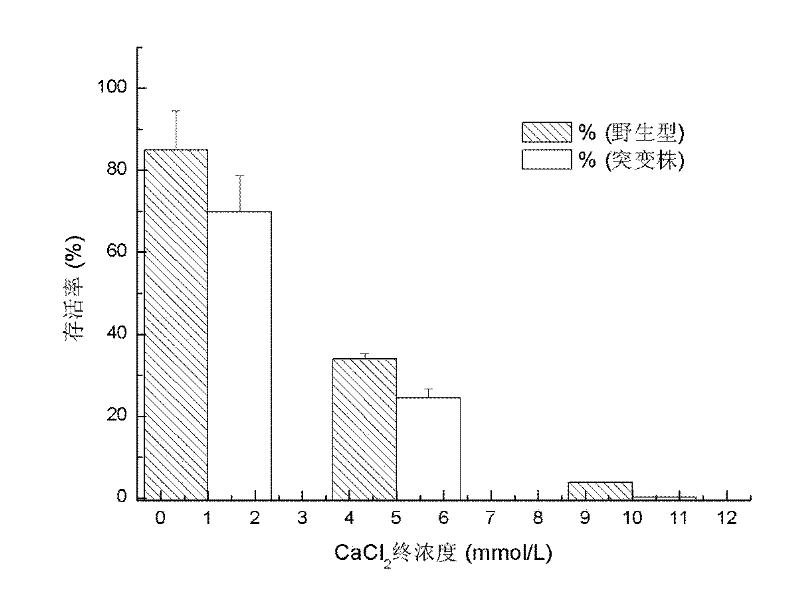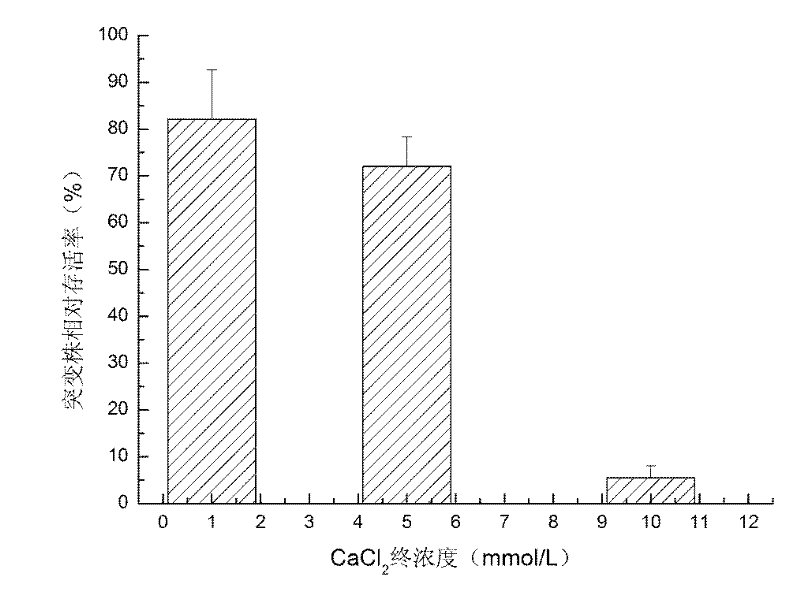Construction method and application of a kind of Saccharomyces cerevisiae gsh1 deletion mutant strain
A Saccharomyces cerevisiae, deletion mutation technology, applied in the direction of microorganism-based methods, biochemical equipment and methods, microorganism measurement/testing, etc., can solve the problems of in vitro cytotoxicity research and other problems
- Summary
- Abstract
- Description
- Claims
- Application Information
AI Technical Summary
Problems solved by technology
Method used
Image
Examples
Embodiment 1
[0035] The present invention will be further described below by taking the construction of the Saccharomyces cerevisiae Δgshl mutant strain and the detection of cadmium chloride cytotoxicity as examples, referring to the accompanying drawings. Saccharomyces cerevisiae BY47421 strain and plasmid pFA6a-Kan MX6 were obtained from China Center for Type Culture Collection.
[0036] A method for constructing a Saccharomyces Δgshl mutant strain, the steps of which are:
[0037]Construction of Saccharomyces cerevisiae Δgshl mutant strain: Saccharomyces cerevisiae gene homologous recombination knockout principle, primer design, knockout fragment transformation method was carried out according to the method described in the literature (Yeast, 1998, 14:953-962), this method is the current Saccharomyces cerevisiae General method for gene knockout in China;
[0038] 1) Primer design: Design primers based on the gshl gene sequence of Saccharomyces cerevisiae (GenBank: BK006943.1):
[0039...
Embodiment 2
[0046] An application of the Δgshl mutant strain utilizing Saccharomyces cerevisiae in improving the cytotoxicity sensitivity of heavy metals such as cadmium chloride to yeast cells, the steps are: (Others commonly used in heavy metal cytotoxicity detection also include V79 cells, CHL cells, L929 cells, etc.)
[0047] 1) Cadmium chloride treatment: the Δgshl mutant strain and the BY47421 strain were inoculated in 5mLYPD medium from the slant, 200r / min, 30°C shaking culture for 24h; cadmium chloride was added to the final concentration of 1, 5 and 10mmol / L, the sample without cadmium chloride was used as the control; all samples were shaken at 200r / min, 30°C for 24h;
[0048] The YPD components are as follows: every liter contains 20g of peptone, 10g of yeast extract and 20g of glucose; adding agar to a final concentration of 2% (w / v) is a solid medium;
[0049] 2) Viable cell count: in step 1), the Δgshl mutant strain and the wild-type BY47421 strain were not added with cadm...
PUM
 Login to View More
Login to View More Abstract
Description
Claims
Application Information
 Login to View More
Login to View More - R&D
- Intellectual Property
- Life Sciences
- Materials
- Tech Scout
- Unparalleled Data Quality
- Higher Quality Content
- 60% Fewer Hallucinations
Browse by: Latest US Patents, China's latest patents, Technical Efficacy Thesaurus, Application Domain, Technology Topic, Popular Technical Reports.
© 2025 PatSnap. All rights reserved.Legal|Privacy policy|Modern Slavery Act Transparency Statement|Sitemap|About US| Contact US: help@patsnap.com


